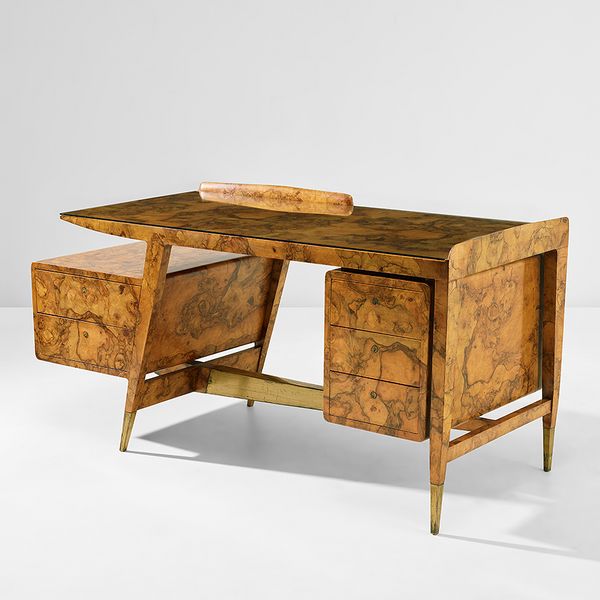Gio Ponti, Desk from Casa di Fantasia, Milan, ca. 1951. Design London.
—Written by Brian Kish, Curator and Specialist in 20th Century Italian Architecture and Design, Consultant to the Gio Ponti Archives.
The present desk and coffee table are unique examples from Gio Ponti's Casa Lucano, also known as Casa di Fantasia, of 1951. Both designs have been owned by the family of Giordano Chiesa, the ebanista who originally made them and who had the opportunity to acquire them back from the Lucano family. Both table and desk are Pontian studies in contrasting types of cantilevered forms. The desk catches the eye with a commanding asymmetrical form, weighed by a bold cantilever on the right side and two canted legs tapering at their extremities in a seductive tectonic resolution. Ponti suspended his bank of drawers, a rectangular box with rounded corners, just underneath this top surface but with a gap to lighten its bulk, which is further anchored into a long horizontal crossbar. It also allows for the top surface to serve the practical purpose of accommodating semi-hidden desk materials. To balance the piece, Ponti placed a narrower bank of drawers on the left side as an opposite to the kinetic, almost Baroque play of stability and instability on the left. The piece was originally installed diagonally in a corner of the library study. The wall behind it alternated between the same radica ferrarese as the vertical surfaces of the desk, Piero Fornasetti's laminates of trompe l'oeil books, and a billowing fabric curtain printed with an array of pages from 19th century books.
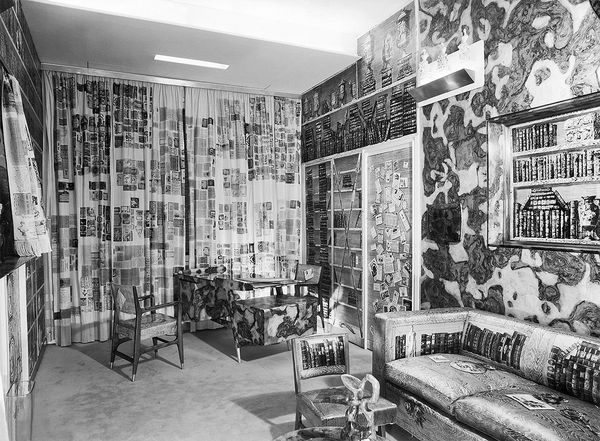
The present desk in Casa di Fantasia, Milan, 1950s. © Gio Ponti Archives.
A comparable surge of optical movement permeates the design of the smaller rectangular coffee table. It too has a cantilevered thrust, but projects frontward as if ready to interact with the living room sofa and a pair of armchairs. The profile view shows how the two flat surfaces, glass tabletop and lower shelf, are masterfully conjoined with arm and leg into a single form along a serpentine line that ends in a brass sabot in the front. Meanwhile the two smaller back legs are almost invisible under the opaque wood plane, which turns the table into a half-suspended object ready to scurry across the room. This all concurs to lend this domestic object an anthropomorphic quality, in tune with the magical overtones permeating the apartment. Both works were outstanding within the scope of this complex private commission for the Lucano house where Ponti combined rigor and seduction to interpret a Metaphysical/Surrealist idiom. This proved to be his ultimate effort in exploring elusive realms of fantasy for the enjoyment of an enlightened Milanese patron.
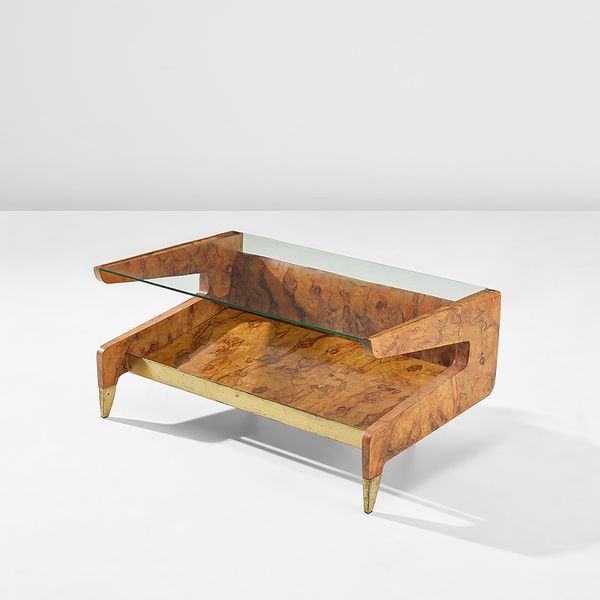
Gio Ponti, Coffee table from Casa di Fantasia, Milan, ca. 1951. Design London.
Never missing an opportunity to further evolve his ideas, Ponti later altered both the desk and coffee table into more practical public commissions. Dispensing with the burled walnut veneers meant to sublimate and dematerialize the structure of these objects, Ponti turned to solid wood timbers in either walnut, oak or elmwood, and brought the form back into focus. He conferred tectonic clarity to their outline with few modifications. The coffee table found placement in some of the smaller waiting rooms throughout the second Montecatini Office building of 1951 in Milan. It was also included in a selection of furniture for the Joseph Singer New York showroom, for which a promotional photo demonstrates the table half suspended effect achieved by the unusual placement of the smaller back legs.
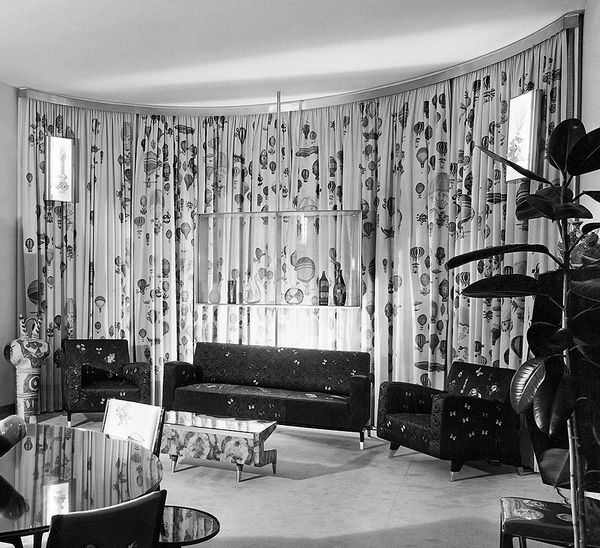
The present coffee table in Casa di Fantasia, Milan, 1950s. © Gio Ponti Archives.
It is also in New York that a final iteration of the desk found its way into the Altamira showroom of 1953. By then Ponti had decided to remove the narrower bank of drawers on the left to obtain a lighter structure. Yet he chose to retain the playful, variable-width tapering band rising above the writing surface to frame it on two sides. It should then come as no surprise that Ponti singled out this piece by presenting four photos of it in his mid-career survey publication of 1954 Espressione di Gio Ponti, to proclaim his satisfaction with one of his most important design achievements. In his own words, "This is my masterpiece. I call it my show horse: I mean it is a piece of furniture that is very simple but not formally inert". No doubt he would have expressed a similar opinion on his cantilevered coffee table.
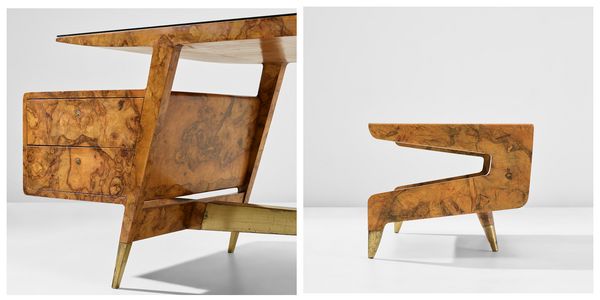
(Left) Gio Ponti, Coffee table from Casa di Fantasia, Milan, ca. 1951. (Right) Gio Ponti, Desk from Casa di Fantasia, Milan, ca. 1951 (detail). Design London.
Here on offer we have the first iterations of the desk and table, artfully crafted by their maker, Giordano Chiesa; both are graced with subtle details not found in the later production. This explains why Chiesa himself sought to acquire them back, so convinced was he of his own achievement in this collaboration with Ponti.
Discover More from Design London >
Recommended Reading
